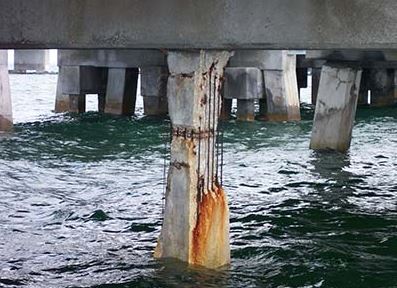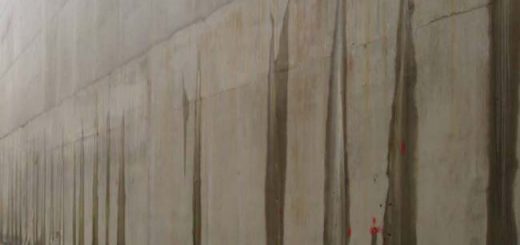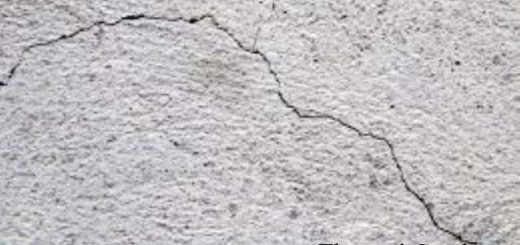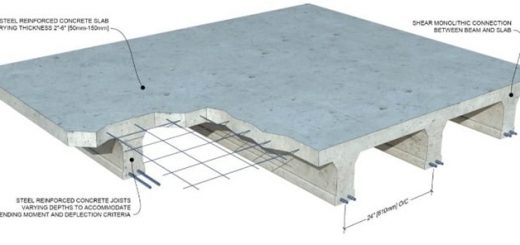Durability of Concrete [Requirements and Problems]
The durability of concrete can be considered as part of the structural design and it is connected with the number of years that the structure is to be designed.
The durability of concrete is discussed with reference to two aspects in this article.
- Durability Requirements
- Durability Problems
Durability Requirements
The existence of the structure for a longer duration without losing much of its condition which was at the construction is the expectation of considering durability requirements in reinforced concrete design. The durability of the structures is discussed in terms of the expected life of a structure.
Durability designs are carried out specifying material requirements and based on the exposure conditions that the structure to be in contact with.
According to the design standards, durability is specified in relation to the exposure condition further the selection of the structural class for selecting cover to the reinforcement, is made based on some other factors in addition to the design life in design in Eurocode 2. All the design standards follow similar nature procedures in specifying durability.
Some of the aspects considered in selecting durability are as follows.
Cover to the Reinforcements
Desing the cover and selection procedure plays a vital role in the durability design of reinforced concrete structures. Corrosion of the reinforcements is mainly due to the lack of adequate cover. Poor construction practices and failures to identify the requirement of required cover to the reinforcements could cause the inadequacy.
Depending on the nature of the structure and as per the location where the construction is done, the designer shall select the suitable cover to the reinforcements in accordance with the design standards. The following three main factors are considered in Eurocode in selecting the cover to the reinforcements.
- Requirement with the bonding of reinforcements
- Requirements with the durability of the reinforcements
- Allowances for design deviations.
Following the guidelines are given in Eurocode 2 in relation to the above factors, the section of the cover can be done. Further reading on the section of cover to the reinforcements could be done following the article “ Nominal Cover to Reinforcement as per Eurocode”
Limiting the Cracking of Concrete
All the structures built in the world get cracked due to variations in regions. Avoiding the cracks in structural elements is almost impossible though it can be controlled up to a level where it does not harm even in severe environmental conditions. Usually, the crack width and the depth of the crack cause durability issue.
There are two methods that can be used to design for cracking
- Limiting Stress Method
- Limiting the crack width method
Limiting Stress Method
Limiting the stress in the reinforcement is made in this method. Maintaining the reinforcement stress at a lower level, it reduces the stress in the concrete also. There is more room for the increase in the stress due to the thermal and other effects that cause the cracking of concrete. Further, less strain in the concrete will not increase the width of the surface cracks that could appear when concrete gets hardening.
Due to the maintaining of less stress in the reinforcement, it is required to provide a higher area of reinforcements to carry the same bending moment. It increases the cost of construction; however, it is the best method the minimize cracking.
Limiting Crack Width Method
Limiting the width of the crack is done to the specified level based on the type of the structure and as per the design code used. Limiting the crack width method is not that costly as the limiting stress method. However, it has a higher risk compared with the limiting stress method.
According to the BS 8007 – Design of Concrete Structures for Retaining Aqueous Liquids, it is required to limit the width of crack to 0.2mm or 0.1mm depending on the following conditions.
In addition to the above, BS 5400 has also specified the width of the crack based on the exposure conditions. The following table was extracted from the BS5400 could also be referred to when selecting a suitable cover to the reinforcement.
Strength Class and Water Cement Ratio
The strength class of the concrete plays a major role in the durability of the concrete. Eurocode 2, Table 4.3N classifies the structures and as per its classification, different strength classes are recommended depending on the exposure conditions. The water-cement ratio is directly related to the strength of the concrete. Thus, the selection of the correct strength class is a must in the durability design of concrete structures.
BS 8007 which is used to design the structures to retain aqueous liquids suggests the acceptable water-cement ratio and the cement content need to be used. The following information was obtained from the code.
- The maximum cement content should be 325 kg/m3. A maximum water-cement ratio of 0.55 for ordinary portland cement and when portland pulverized-fuel ash cement or a combination of ordinary portland cement and pulverized fuel ash is used the water/cement ratio should be 0.50.
- Characteristic cub strength of concrete shall not be less than 35 N/mm2 and concrete shall be classed as 35A.
- For reinforced concrete, the cement content should not exceed either 400 kg/m3 of ordinary portland cement or cement containing g.g.b.s. or 450 kg/m3 where cement containing p.f.a. are used. For prestressed concrete, the maximum cement content may be increased to 500 kg/m3 or 550 kg/m3 respectively.
Further reading on cement and its additives the article “Cement and Cement Additives” could be read.
Durability Problems in Concrete Structures
Issues connected with durability problems are mostly irrevocable when they start to show up. Some of the issues can not even be repaired other than watching them be more serious. Therefore, identifying and taking precautionary measures on this subject is vital at the correct stage. Durability problems can be categorized under the following main causes.
Corrosion of Reinforcement
The rate of the corrosion of reinforcement depends on the exposure condition. If there are cracks or there are other means to supply primary requirements for reinforcement to cracks, deterioration of the reinforcements is unavoidable. However, properly design structures do not face this issue if it was constructed as per the specifications provided by the designers and follow correct construction practices.
For example, the rate of corrosion for a structure constructed close to the sea or when it is in contact with seawater, assuming there is a constant rate for corrosion, Steel Piling Group suggests the following values as rates for corrosion.
Depending on the exposure condition, the expected depth of corrosion can be calculated from the above values depending on the design life of the structure. Further, especially for structural, steel, the additional thickness can be considered at the design stage as an allowance for corrosion. For example, when it is required a 20mm thickness by design, one might select the thickness as 22mm. It is solely the designer’s competence and experience to select it.
Corrosion of the reinforcement or the structural steel in a structure affects it differently. Further, it affects the other problems listed above as durability problems directly or indirectly. Therefore, it is the prime importance to consider these issues at the design stage and take corrective actions to avoid them. Article “Chemical Attack on Concrete” and Nominal Cover to Reinforcement as per Eurocode” discuss more on causes of corrosion and method to be followed in avoiding the corrosion of reinforcements.
Deterioration of Concrete
Concrete deteriorates with time when it is exposed to the environment and loadings are applied to it. Deterioration of the concrete can be discussed under the following categories which do not include in the above list of durability problems. Necessary actions shall be taken in the design stage to avoid the occurrence of these issues or to minimize the occurrence.
More information on the Alkali-Aggregate Reaction and Cracking of Concrete, the articles “Chemical Attack on Concrete” and “Cracking of Concrete” could be referred.
Structural Failures
Structural could fail due to the lack of design strengths with the loss of element capacities. Structures are designed for a design life that is based on the selected structural class. Base on the Eurocode, there are six structural classes from S1 to S6. The article “Structural Classes as per Eurocode” discuss the six different classes that can be considered in the design.
If the structure can not withstand its design life due to the failures caused by the problems related to durability, serious attention shall be made to the design consideration or the changes in the exposure conditions. Necessary measures shall be taken to overcome the issues. Exposure conditions, environmental conditions could be changed with time.
Structural systems shall be assessed periodically based on the importance of the structure especially when it is exposed to severe environmental conditions over a longer period of time. For example, a structure constructed in ports is subjected to long-term exposure to seawater. It could lead to deterioration of the concrete as shown in the following figure.
The above photo is clear evidence that the structure needs the attention of the structural engineers if it is required to use further and further. Thus, it can be concluded that it is the responsibility of the structural engineers of the client organizations to look into this matter timely after the structures are handed over to them. Lack of attention on the durability aspects could lead to failures of the structures.
Cracking and Spalling of Concrete
There are different articles on the web on the subject cracking of concrete as a result of different reasons. The article and other articles connected with it could be referred to for more information.
Spalling of Concrete is detaching the concrete and falling or remaining as a separate concrete from the primary structure. The breakaway of concrete could be due to the corrosion of reinforcement and as a result increase in the volume around the reinforcement bars. Due to the additional tensile stress caused by the increment of the volume, concrete detaching starts.
Lack of attention on this issue could even lead to structural failures. Timely attention and the use of correct repair methods could avoid the corrosion of the reinforcement and spalling of concrete.
Unable to Use the Structure
Durability problems cause the structures unusable even without their failures. Collapsing of the part or parts of the structures causes difficulty to access especially in building structures. For example, due to the spalling structural component, the building can not be occupied. Further, some of the areas of the building can not be used.
As indicated in the figure, there are many occasions that the structures can not be used due to the causes of durability issues. Further, the fear in the general public with the appearance of the cracks also causes the people to refrain from entering the buildings. The same scenario is applied to other types of structures.
Periodic Maintenance and Its Cost
Durability issues cause many issues to the owner or the clients who own the structure. They need to attend to the structure timely and to do periodic inspections to know whether any attention of structural engineers is required. Base on the condition of the structural maintenance could be done on the recommendation of the structural engineer. Further, durability problems are very common in steel structures and they need maintenance work from time to time.
There will be a cost for any type of rectification or maintenance work. Such costs will be an additional cost to the client which has to be borne until it lasts.













